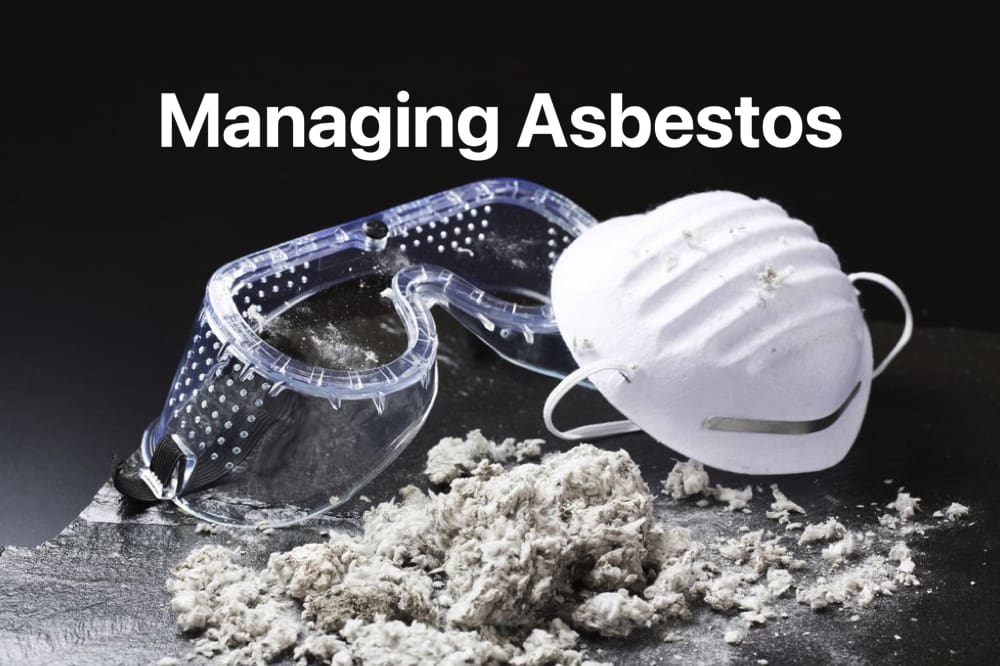Mesothelioma -Do You Know Enough About this Deadly Disease?
Managing Asbestos is a legal duty. Asbestos contains tiny fibres which are too small for the eye to see, yet they can do great damage to the lungs if breathed in. Mesothelioma is a cancer of the lining of the lung and is just one of the diseases associated with the material. The latency period for symptoms of the disease can be long – often 10 or more years – and there is currently no cure.
5 Key Points for Managing Asbestos
- Asbestos could be present in any building either built or refurbished before the year 2000. Check building and renovation plans if you are unsure, as well as any asbestos surveys undertaken. Ceiling and floor tiles, older boilers, lagging and asbestos cement are often key areas to look at.
- The material only poses a significant risk to health if it is accessible and in a poor or damaged condition. It is therefore important that you know what type of asbestos you have and the condition it is in.
- Those most at risk are people who work on the fabric of the building – carpenters, plumbers, electricians and builders, for example, as well as any maintenance staff on site. There is therefore a duty to tell those who may be on your premises about any asbestos in the building before they undertake work. You should do this before they carry out a risk assessment/method statement so that all risks and control measures are factored in.
- Some work with asbestos – either removing it or working with it – may require a licensed asbestos contractor. Check that any contractors you use have the correct licence to do the work.
- Making others aware of the existence of asbestos is vital. As a visual prompt, label your asbestos with industry-recognised stickers so that it is clear that asbestos is in the vicinity should anyone be undertaking work in the area.
Asbestos is a killer and any amount of exposure can be dangerous – preventing exposure is therefore the key to limiting the number who develop asbestos-related diseases. Protect your staff, contractors and visitors so they never have to suffer.
The Differences Between Mesothelioma and Asbestosis
Both mesothelioma and asbestosis occur most often in people who were exposed to asbestos on the job. Second-hand asbestos exposure can also result in a diagnosis of either disease.
Asbestosis only affects the lungs and respiratory tract and cannot spread or develop elsewhere like mesothelioma cancer. The disease does not typically affect life expectancy. However, an asbestosis diagnosis can increase the risk of developing mesothelioma or another disease.
Although both caused by asbestos, mesothelioma and asbestosis develop differently from one another. Mesothelioma develops after asbestos fibers become lodged in the mesothelium lining of the chest, abdomen, or thoracic cavity rather than in various body cavities, asbestosis only develops in the air sacs of the lungs.
Managing asbestos online training
Our asbestos awareness online training is designed for your employees to be able to complete it when it is most convenient for them at work or home. The training is multiple choice and lasts for approx. 1 hour.
Why our Asbestos Online Training is different
- Our course is priced for all businesses at £25 + vat per delegate
- Mobile friendly
- We have an online platform that businesses can create an account and allocate employees training purchased
- Managers are able to see each employees progress
- We allow up to two resets before the course is considered as a fail
- Try our asbestos training for FREE
Managing Asbestos RAMS
A comprehensive risk assessment and method statement template for removal asbestos floor tiles risk assessment, developed by qualified health and safety professionals.
Our removal asbestos floor tiles risk assessment risk assessment and method statement document proactively identify, evaluate, and mitigate potential risks.
The document covers all the appropriate Control Procedures and Hazards for a typical job but can be easily edited to your needs. This is a ready-to-use document that can be implemented in your business straight away.
You can add your brand and adjust the content to fit your site constraints.
Includes:
- 12 pages of content
- 3,251 words
Additional Information:
- The document covers all the appropriate Hazards and Control Procedures for a typical job
- In “MS Word” format
- Fully editable – include your company logo and details
- The template should be changed to suit the specific job you are performing






